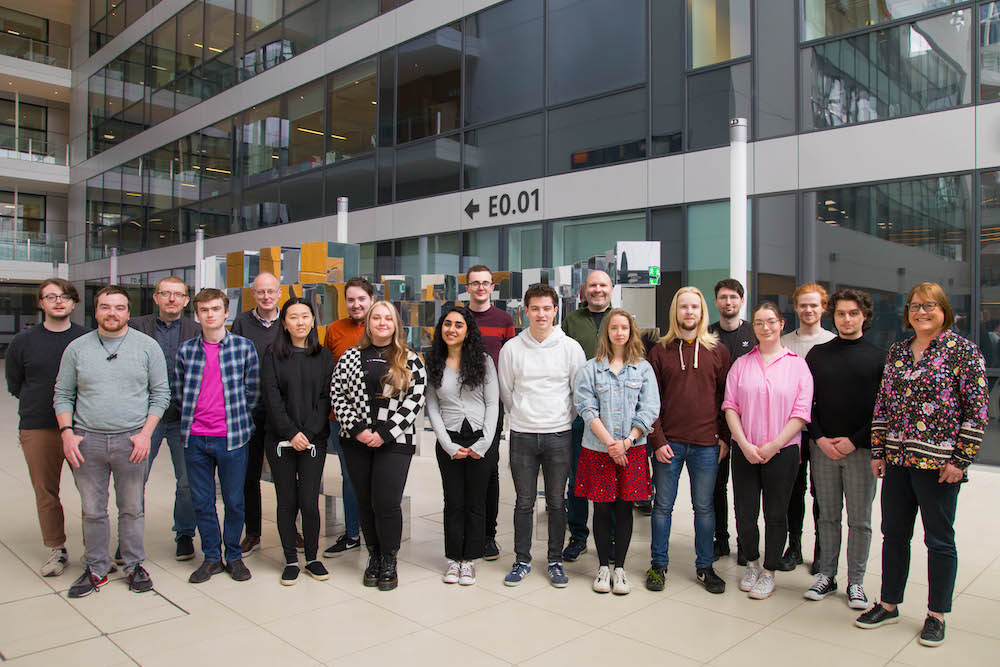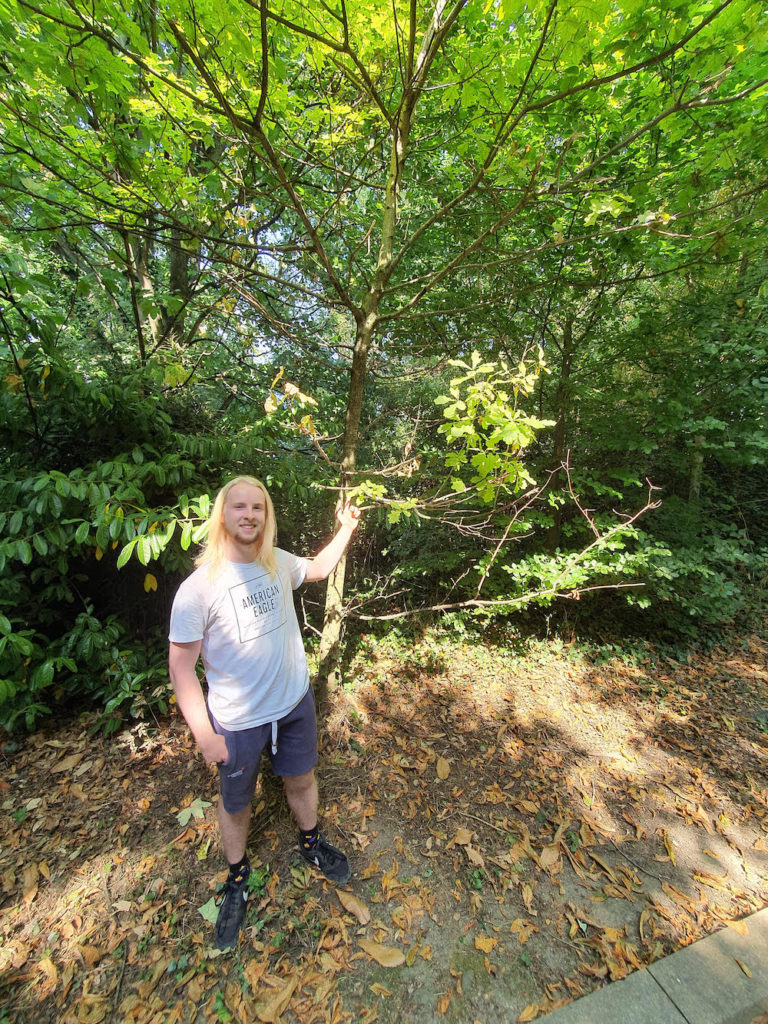Read the paper in FEMS Yeast Research at https://academic.oup.com/femsyr/article-lookup/doi/10.1093/femsyr/foac053
Read more about the history of brewing: A short history of beer brewing, by L. Raihofer, M. Zarnow, M Gastl and M. Hutzler (2022) EMBO Reports:e56355
Staff involved in teaching the modules: Professor Geraldine Butler, Professor Ken Wolfe, Dr Tadhg Ó Cróinín, Dr Kevin Byrne, Dr Lisa Lombardi, and Assoc Prof Peadar O’Gaora. PhD students in 2021/2022: Sean Bergin, Conor Hession, Eoin Ó Cinnéide and Adam Ryan.
Humans have been brewing beer for millennia – some of the oldest breweries date from 6,000-3,000 BCE, from Turkey, Egypt, China and Israel. By the middle ages most villages (and possibly many households) in Europe brewed beer – it was safer to drink than water, because the alcohol suppressed the growth of bacteria.
The ingredients used varied throughout the years: various sources of sugars and flavourings were tried. There was a general shift to using grains like barley as sugar sources, and many fermentations were likely started using leftover bread and sourdough. Grains were particularly popular in northern countries which were too cold to grow grapes. In the Netherlands, Belgium and Germany, beers were flavoured using grut, a mixture of herbs including common heather, gale and yarrow. In the 14th and 15th centuries, grut was replaced with hops, which had better antibacterial properties.
The beer purity laws in Bavaria in 1516 restricted the components of beer to barley (the malt), hops and water. Yeast was not mentioned, because they did not know that a biological organism was needed to ferment the sugars to alcohol. However, even medieval brewers knew that the foam from the top of an old fermentation (gischt, or yeast) was needed to start a new brew. Yeast were first seen under a microscope by Antonie van Leeuwenhoek in 1680, and in 1867 Louis Pasteur showed that the yeast Saccharomyces cerevisiae was necessary for fermentation. S. cerevisiae (bakers’ or brewers’ yeast) is still used to brew ales and stouts, to make wine, and to make bread, all over the world.
During the 1500s however something major happened. An edict from Albrecht V in Bavaria restricted brewing to the colder months (between 29 September, the Feast of St. Michael, and 23 April, the Feast of Saint George) to help reduce bacterial contamination (off flavours), and possibly to minimise the risk from fire. The brewers dug large cellars for cold storage over the summer (lagering). This coincided with the development of new beers and the appearance of a new yeast that didn’t float to the top like S. cerevisiae (a top fermenter) but instead sank to the bottom (a bottom fermenter). The “lager” yeast was eventually purified by Emil Christian Hansen working in the Carlsberg Laboratory at the end of the 19th century. Originally called Saccharomyces carlsbergenesis, we now know it as Saccharomyces pastorianus (named after Pasteur). Hansen supplied many breweries with pure cultures of the lager yeast, and today >90% of the beers brewed worldwide are lagers.
Saccharomyces pastorianus is an unusual organism. It is found only in breweries, and is never found in the wild. Following advances in DNA sequencing technologies in the late 20th century it became clear that S. pastorianus is a hybrid, formed by mating between S. cerevisiae and a second unknown parent species, much like a mule is a hybrid between a donkey and a horse. This hybridisation probably happened in a brewery in Bavaria in the late 1500s. The mystery of the second parent was solved in 2011 when Diego Libkind and his co-workers discovered natural isolates of the second parent, now called Saccharomyces eubayanus, in Patagonia. The genetic contribution of the cold-tolerant S. eubayanus helped S. pastorianus adapt to the lower temperatures. But how did S. eubayanus get to Bavaria? Early theories that it may have been carried across the Atlantic by ships are unlikely , particularly as isolates were subsequently found on the Tibetan Plateau, North America and New Zealand. Subsequent detailed analysis (including from Francisco Cubillos and Chris Todd Hittinger) suggests that S. eubayanus arose in Patagonia and colonised the rest of the word during the post-glacial period, probably carried by insects, birds and animals. It is likely that S. eubayanus reached Europe at some stage, but was it there in the 1500s, and is it still there?
Intriguing hints from Daniela Delneri’s group at Manchester University, who sequenced DNA from soil without isolating individual species in 2019, suggested that S. eubayanus might be lurking in the Italian Alps. However, the most exciting recent breakthrough came from undergraduate students at University College Dublin. Third year students studying Microbiology or Genetics have the opportunity to take two research modules. In one, they collect soil samples, attempt to isolate yeasts, and then sequence a small region of the DNA (the ribosomal DNA) to try and identify the species. They then choose four or five species for further analysis, including sequencing their entire genomes (working out the genetic code). In the second module, they learn how to assemble the genomes (something like building a jigsaw, except with millions of pieces). The students have made several exciting findings, including finding a brand new species (more details available at the Wild Yeast Project: Fantastic Yeasts and Where to Find Them).

Front row: Eoin Ó Cinnéide (PhD student), Luke Moore (undergrad), Jiaran Gao (undergrad), Julia Welc (undergrad), Fouz Alqaderi (undergrad), Shafik Oubihi (undergrad), Alexandra Mashova (undergrad), Stephen Allen (undergrad), Aida Don (undergrad), Heytham Ghnewa (undergrad), Prof Geraldine Butler
Missing from photo: Athaliah Fubara, Blessing Igharo, Cian Smith, and Sarah Redmond (undergrads). Photo: Craig Slattery.


In September 2021, the students collected soil samples from all over the Belfield campus of UCD. Stephen Allen collected some from a secluded wooded area. The initial ribosomal DNA sequence showed that two of his isolates were Saccharomyces species and hinted that they might be S. eubayanus. However, there wasn’t enough information to be sure. PhD students Conor Hession, Eoin Ó Cinnéide and Adam Ryan hurriedly prepared DNA and sequenced it in the Butler and Wolfe labs using a portable DNA sequencer (MinION) from Oxford Nanopore Technologies. Professor Geraldine Butler hovered over the machine waiting for the raw data. There was great excitement when we realised that Stephen had collected the first known isolates of Saccharomyces eubayanus, showing that the species can be found in Europe.


PhD student Sean Bergin (part of the SFI CRT Centre for Research Training in Genomics Data Science) looked carefully for any hints from the genome sequences. He showed that the Irish isolates belonged to the “Holarctic clade”, a group of S. eubayanus previously found in the Tibetan Plateau, North America and New Zealand that are more closely related to the S. eubayanus component of the lager yeast S. pastorianus than any isolate from Patagonia. However, the Tibetan isolates are slightly more closely related than the Irish ones are – we estimate that a Tibetan-like population contributed 50-56% of the S. eubayanus genome to S. pastorianus, and an Irish-like population contributed 38-42%. Moreover, Conor Hession showed that the Irish isolates don’t grow well on the sugar maltose, a key component of the barley “malt”. This means that although we showed that S. eubayanus can live in Europe, there may be an as yet undiscovered population somewhere else, maybe in Germany, that is even more closely related to the S. eubayanus parent of S. pastorianus.
What come next? We have looked for more Irish isolates of S. eubayanus (and we think we have found them!). We are also curious to know if the Irish isolates can produce a decent beer. Heineken have made “wild beers” from other S. eubayanus isolates. We are looking for a commercial partner that would help us make a local beer, either using S. eubayanus alone, or as a hybrid with an ale yeast (see Nova UCD for licensing opportunities). Finally, we hope we will stimulate other groups to go out and look for more European isolates of S. eubayanus. We have shown that you don’t need an expensive expedition or complex methods – sometimes enthusiastic students can make the most exciting discoveries in their own backyard,